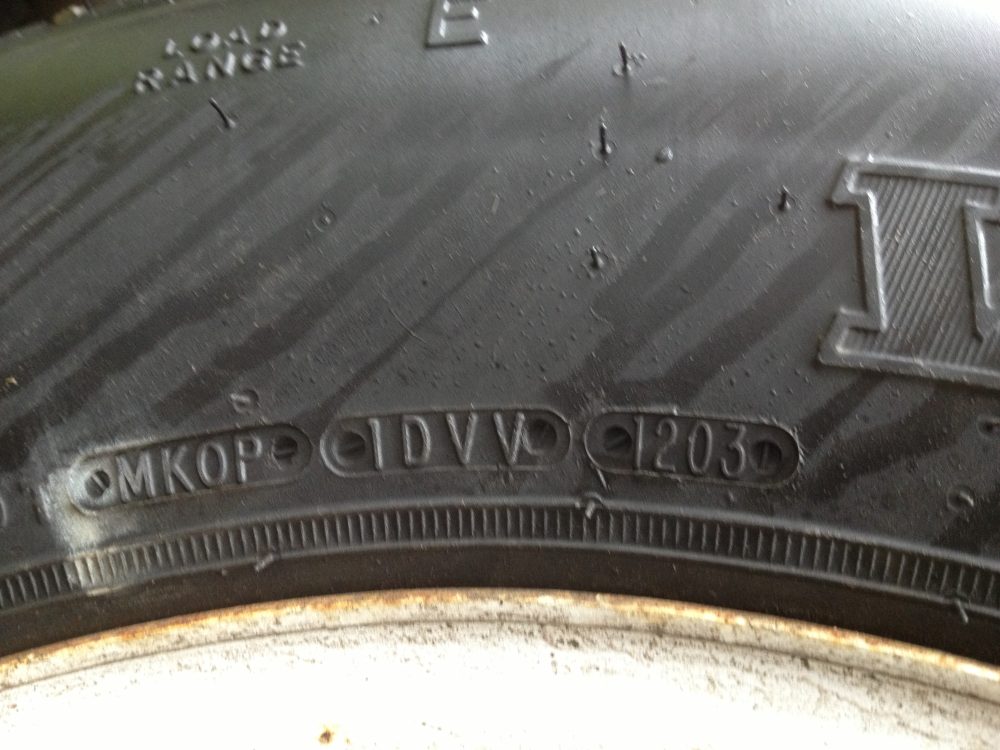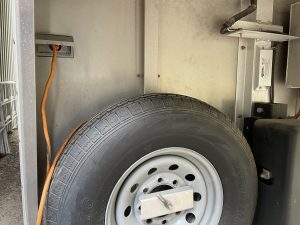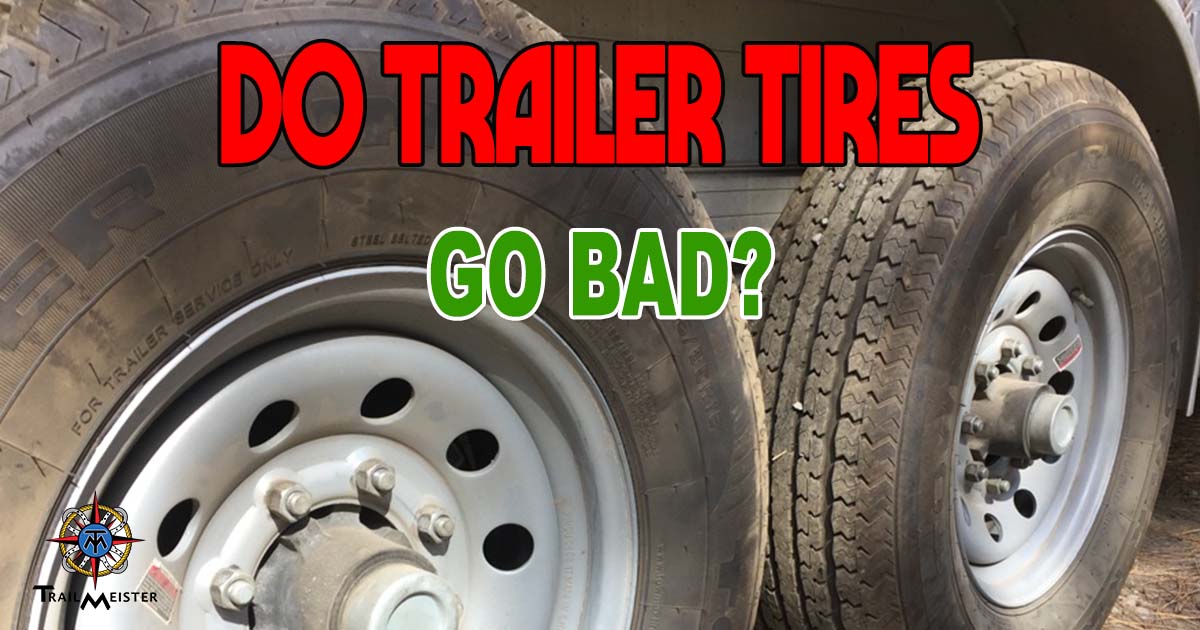Spoiler alert: Yep. They sure can.
I just put a fresh set of tires on the Taj Mah Small, my little LQ horse trailer. That might not sound like breaking news, until I tell you those tires only had about 10,500 miles on them. The tread still measured a healthy 7/32 of an inch. So why the swap?
The answer lies in what you can’t always see.
The sidewalls showed some signs of cracking, and the DOT date codes told the rest of the story: they were old. And old rubber doesn’t age like fine wine; it dries out, loses flexibility, and eventually becomes a liability. It’s a bit like using a rubber band that’s been sitting in a junk drawer for a decade. It looks fine until it snaps when you need it most.

Cracked sidewalls might seem cosmetic, but those cracks can run through the structure. If the steel belts separate or the tread peels off at speed, you’re in for a rough ride, or worse. Even short of catastrophe, aging tires can leak, hydroplane, or increase your stopping distance when you really need to hit the brakes.
And this isn’t just about sun-baked trailer tires. Even tires stored indoors eventually break down. Most manufacturers agree that tires have a shelf life, no matter how good they look. Ford and Nissan say six years, tops. Michelin and Continental stretch it to ten, if you’re inspecting them yearly after the fifth birthday.
Trailer Tires Age Out – Period
Most folks will wear out their vehicle tires before the rubber ages out. But not when it comes to trailers. Let’s be real: trailer tires do a lot more sitting than rolling. For most of us, the tread will still be perfectly serviceable when the sidewalls start to crack. Trailer tires almost always age out before they wear out. And that’s where folks get surprised, because it’s not about miles. It’s about time.
Reading the Fine Print (Literally)
If you know where to look, every tire has a “born-on” date. Find the oval with four numbers stamped into the sidewall. A code like 1203 means the 12th week of 2003, around March.

Just know that the code may be on the inward-facing side of the tire. That means you might have to crawl around with a flashlight or even pull a tire to check it. It’s worth the hassle.
And no, your four tires might not all match exactly. That’s normal and shipping and supply quirks. But they should be close in age. A few weeks or months apart is fine. Years? That’s something to question.
Check Before You Roll
Even if the tires you’re buying are “new,” double-check those date codes before you leave the shop. Sometimes, what’s labeled new has been sitting on a shelf for years. That doesn’t make it dangerous, but it does mean a shorter lifespan for you, and maybe a better price, if you ask.
And the Spare? Yep, That Too
It’s easy to forget the spare tire. Most of us only think about it when we’re stuck on the side of the road. But spare tires age just like the rest, even if they’ve never touched pavement. Give yours a look. If it’s looking rough or aging out, replace it before you need it.

Tires also age faster when exposed to sunlight, extreme heat, salty air, or repeated curb contact. Underinflated tires also break down more quickly. Keep them properly aired and out of the sun when you can.
Bottom Line
Tread depth isn’t the whole story. Check the sidewalls. Read the DOT date code. Sometimes, the real danger is what you can’t see until it’s too late.
For more of my thoughts on trail riding and camping with horses, plus gear tips, safety advice, and a few hard-earned lessons, visit me at TrailMeister.com or grab a copy of my best-selling book, The ABCs of Trail Riding and Horse Camping, on Amazon.


